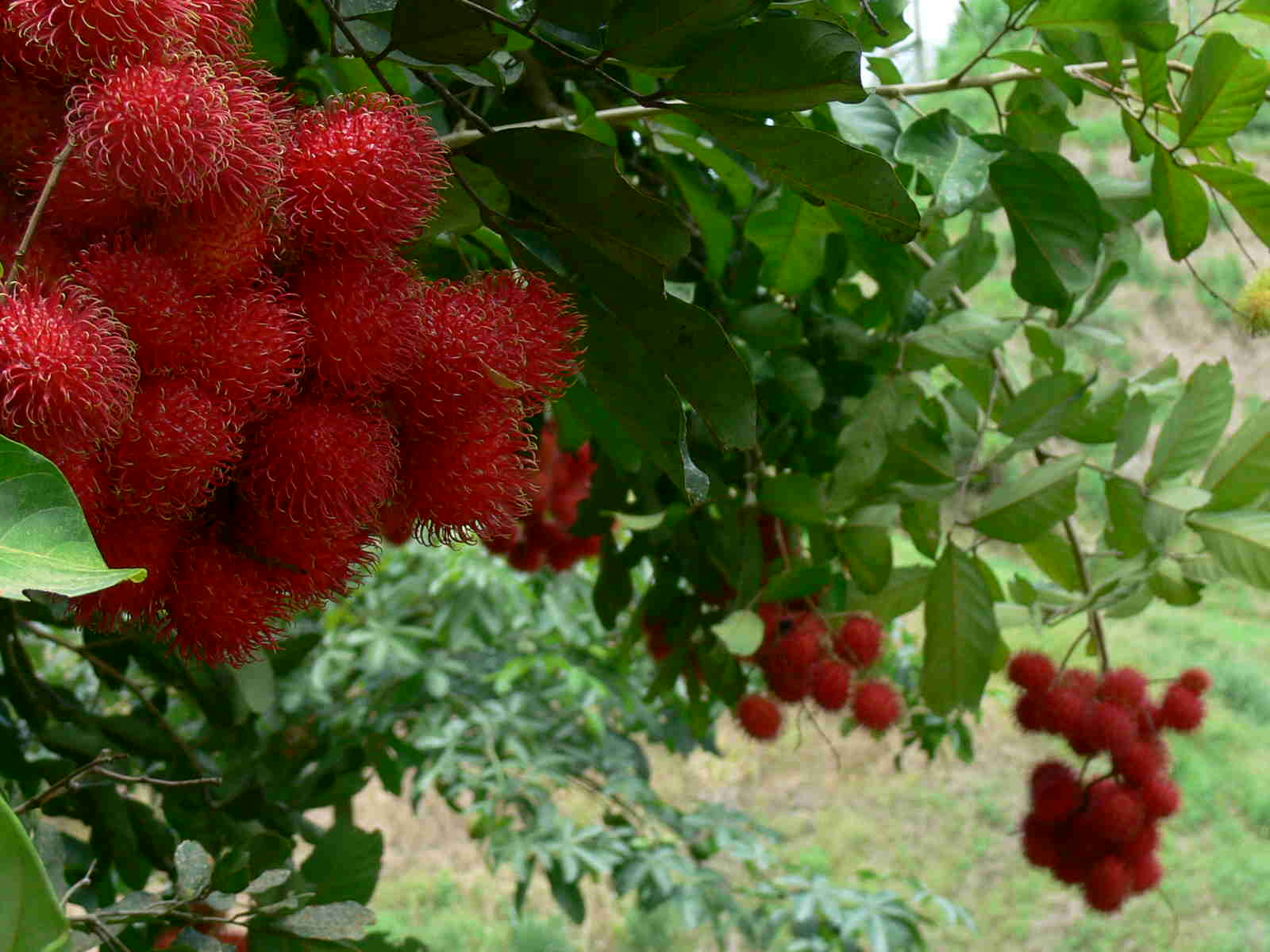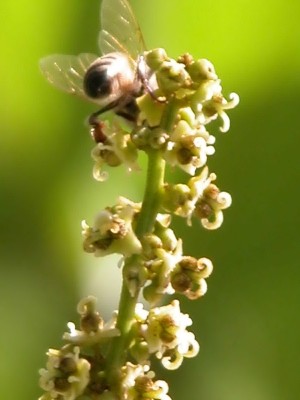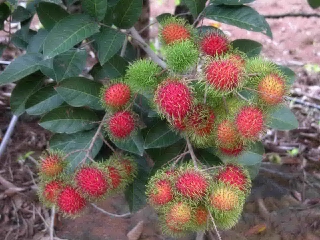
How Does It Reproduce?
 The
rambutan is a tree that produces flowers and fruit. This means
that its main way of reproduction is through pollination of its
flowers and the seeds are dispersed via the fruit. The flowers
of the rambutan do not resemble the usual type of flower. They
are rather small in size, green in color, and do not contain
pedals. Some may ask the question, “How do they attract
organisms for pollination without extravagant pedal color?” The
rambutan’s flowers rely on fragrance to attract pollinators to
aid in reproduction. Cross-pollination is necessary for Nephelium
lappaceum reproduction. This means that pollen from a flower on
one tree must be transferred to a completely different flower on a
different tree in order for proper pollination to occur. The most
common pollinators of rambutan flowers are bees, butterflies, and
flies. If you would like to learn more about the Purple Coneflower,
another plant that reproduces via pollination,
click here.
The
rambutan is a tree that produces flowers and fruit. This means
that its main way of reproduction is through pollination of its
flowers and the seeds are dispersed via the fruit. The flowers
of the rambutan do not resemble the usual type of flower. They
are rather small in size, green in color, and do not contain
pedals. Some may ask the question, “How do they attract
organisms for pollination without extravagant pedal color?” The
rambutan’s flowers rely on fragrance to attract pollinators to
aid in reproduction. Cross-pollination is necessary for Nephelium
lappaceum reproduction. This means that pollen from a flower on
one tree must be transferred to a completely different flower on a
different tree in order for proper pollination to occur. The most
common pollinators of rambutan flowers are bees, butterflies, and
flies. If you would like to learn more about the Purple Coneflower,
another plant that reproduces via pollination,
click here.

Once a flower has been pollinated, it begins to grow a fruit, which in time ripens and is eaten by other organisms. This consumption of the fruit ensures that the seed will be dispersed to another location via the organisms feces or dropped on the ground in the process of consumption.
Click here to continue on to Interactions.